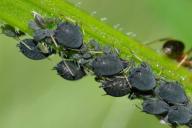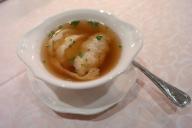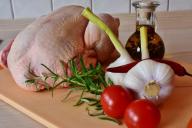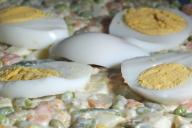Currant is the most common berry shrub. This tasty, healthy, curative and unpretentious plant is found on almost every household plot.
There is always a harvest, but it does not always please the owner.
In order to see large, sweet and healthy berries on the table every year, you should take care of the plant a little. Below are six recommendations that will help with this.
1. Do not dig up and aggressively loosen the barrel circles.
Many gardeners make this mistake, and then they are surprised that the bushes develop poorly, get sick and give a weak harvest.
The fact is that when digging, the root system is damaged, which is located close to the surface of the earth. This is easy to check by simply dropping the earth on top. There will definitely be a root with an abundance of thin roots on the sides, which are responsible for the absorption of nutrients and moisture.
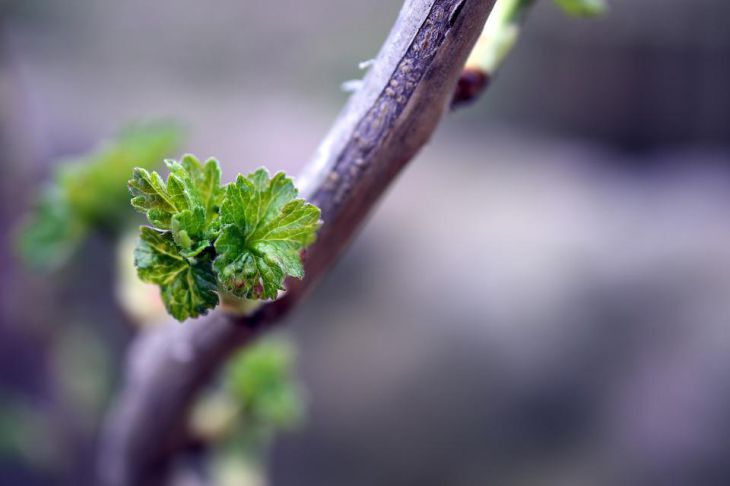
When digging, they are damaged, and the plant then receives less nutrition. Light loosening by 3-5 cm is acceptable . To keep the soil loose all summer, it is better to mulch it around the bushes.
This will not only eliminate the need to constantly loosen, weed and water, but also additionally create a fertile nutrient layer. It is only necessary to lay mown grass or straw during the summer as the old one decomposes.
2. Do not abuse pruning.
Currants need to be constantly updated, but this should be done gradually. You can, of course, cut out most of the shoots at a time, but this will affect the yield. It is better to remove 2-3 shoots every year, which will allow the bush to develop evenly.
The same applies to shoots affected by mites and aphids. If there are few of them, the affected leaves can be torn off and burned.
If there are a lot of such leaves, it is better to resort to special preparations. If most of the leaves are cut off, the plant will not be able to provide itself with nutrition, which will adversely affect its development.
3. To get a good harvest, you need a good top dressing.
You can add a bucket of compost under the bush 2 times a year (in spring and autumn). This should be done before flowering and after harvesting the fruits.
If there is no compost, it is worth pouring an ash solution (1 cup of ash per 10 liters of water, 5 liters under the bush). Before budding, it is recommended to add nitrogen or a complex fertilizer with a high nitrogen content. Nitrogen will help to build up the green mass. During the rest of the fertilizing, nitrogen is introduced in minimal quantities.
4. The plant does not develop well if there are many old branches.
Blackcurrant bushes must be constantly pruned, removing branches that are more than 3 years old. Very few berries are formed on them, and the old ones interfere with the development of new shoots. The red and white shoots can last up to 5 years, after which they are also cut out.
5. Currants, especially black ones, require regular watering.
Otherwise, the berries will be small, hard and tart to the taste. If the summer is dry, 20-30 liters of water should be poured under the bush every three days.
If this is not possible, then at least once a week, the bushes should be watered abundantly, preferably in 2-3 approaches, so that the moisture is well absorbed.
For example, on weekends you can water in the morning and in the evening, pouring 40-50 liters of water under the bush. It is best to mulch the barrel circles after that. Mulch will protect the soil by becoming an obstacle to moisture evaporation, which will allow you to forget about the need for watering until next weekend.
6. Preventive treatments with biologics help to avoid damage by pests and fungal diseases.
Unlike chemical preparations, biological ones are safe for people, pets and bees. The only thing to remember is that a series of treatments is being carried out. One before flowering, the second after, the third a week later.
Usually this is enough, but if pests have already settled in large numbers on the site, it can be difficult to get rid of them in one year. Therefore, preventive treatments should be carried out regularly, in neglected cases, the number of treatments per season can be increased to 4-5.
Important: a common mistake of gardeners is mixing a biological preparation with a chemical one. It is not worth doing this, since chemicals kill microorganisms of biological products, nullifying all their useful properties.
Following these simple rules, even a novice gardener will be able to get a rich harvest of currants, because this is the most unpretentious plant that can only be found in a suburban area.



